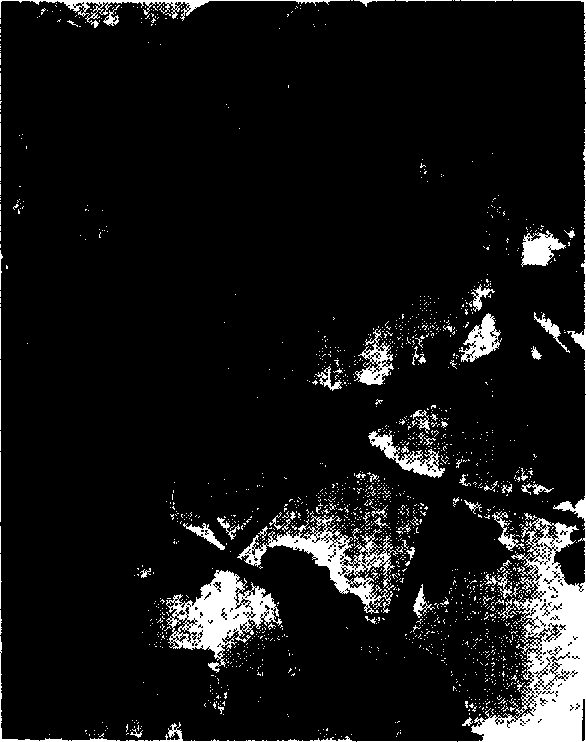Preparation of high-specific surface area nanometer carbon tube
A technology of high specific surface area and carbon nanotubes, applied in the field of carbon nanotubes, can solve problems such as complicated operation process and unsatisfactory specific surface area effect, and achieve the effect of simple process, rich micropores and small pore size
- Summary
- Abstract
- Description
- Claims
- Application Information
AI Technical Summary
Problems solved by technology
Method used
Image
Examples
Embodiment 1
[0025] Potassium hydroxide is used as the activator, carbon nanotubes are added and the activator is added at the same time, the activator and carbon nanotubes are fully mixed and uniformly dispersed by mechanical ball milling, and the ball milling time is 30 minutes. Wherein: the ratio of carbon nanotubes to activator (mass, the same below) is 1:4; the ratio of ball material (mass, the same below) is 3:1, and the mixture of carbon nanotubes after ball milling is activated at a temperature of 1123K for 1 hour, Then wash with hydrochloric acid to remove the activator and catalyst (brought in the original carbon nanotubes); then wash with a large amount of deionized water until neutral, filter and dry. The prepared carbon nanotubes have a specific surface area of 785.2m 2 / g.
[0026] The principle of the present invention is: in the process of mechanical ball milling, the effect of mechanical ball milling on the chopping, opening and defect creation of carbon nanotubes is ef...
Embodiment 2
[0029] The difference from Example 1 is:
[0030] Potassium hydroxide is used as the activator, the activator and carbon nanotubes are fully mixed and uniformly dispersed, and the ball milling time is 25 minutes. The carbon nanotube mixture after ball milling was activated at a temperature of 873K for 3 hours, and then pickled with concentrated hydrochloric acid to remove the activator and catalyst; wherein: the ratio of carbon nanotubes to activator was 1:5; the ratio of ball to material was 10:1, The prepared carbon nanotubes have a specific surface area of 542.3m 2 / g.
[0031] see Figure 4a , 4b , 4c, the carbon nanotubes of the present invention, compared with the original carbon nanotubes, have the same tendency as in Example 1.
Embodiment 3
[0033] The difference from Example 1 is:
[0034] Potassium hydroxide was used as the activator, and the activator and carbon nanotubes were fully mixed and uniformly dispersed by mechanical ball milling, and the ball milling time was 60 minutes. The carbon nanotube mixture after ball milling was activated at 1273K for 1 hour, and then hydrochloric acid was added to remove the activator and catalyst; wherein: the ratio of carbon nanotubes to activator was 1:1; the ratio of ball to material was 2:1, and the prepared The specific surface area of carbon nanotubes is 488m 2 / g.
[0035] see Figure 5 , the carbon nanotubes of the present invention, compared with the original carbon nanotubes, have the same tendency as in Example 1.
PUM
| Property | Measurement | Unit |
|---|---|---|
| specific surface area | aaaaa | aaaaa |
| specific surface area | aaaaa | aaaaa |
| specific surface area | aaaaa | aaaaa |
Abstract
Description
Claims
Application Information
 Login to View More
Login to View More - R&D
- Intellectual Property
- Life Sciences
- Materials
- Tech Scout
- Unparalleled Data Quality
- Higher Quality Content
- 60% Fewer Hallucinations
Browse by: Latest US Patents, China's latest patents, Technical Efficacy Thesaurus, Application Domain, Technology Topic, Popular Technical Reports.
© 2025 PatSnap. All rights reserved.Legal|Privacy policy|Modern Slavery Act Transparency Statement|Sitemap|About US| Contact US: help@patsnap.com



